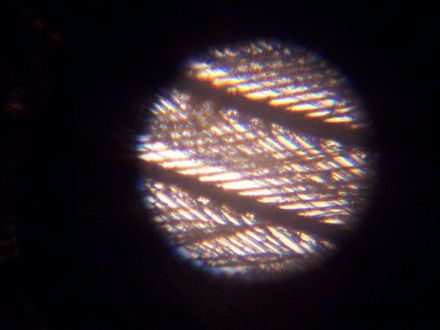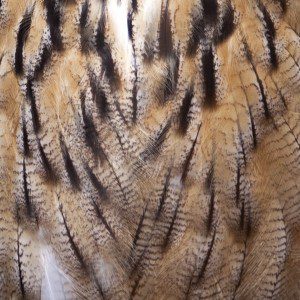Feathers are the defining feature of birds. Everything with feathers is a bird and all birds have feathers, no exception. As we know, down bags and jackets keep us warm, and that’s part of their function on a bird.
As bird progenitors, the dinosaurs, evolved a few hundred million years ago, they were also becoming warm-blooded in the process. (Warm-blooded is not an accurate scientific term, but you know what I mean.) Warm-blooded animals, i.e., birds and mammals, need insulation so they don’t have to burn a lot of energy keeping warm. Mammals have layers of fat for insulation, but birds, in order to fly efficiently, can’t be burdened with too much additional weight of adipose tissue, so they depend on feathers for minimizing heat loss from their body. As dinosaurs were developing warm-bloodedness, their scales overlapped and elongated to retain heat and eventually became the feathers of birds. Only much later in evolution did feathers develop the function of decoration and flight.
Besides body down, almost all birds are hatched with natal down or develop it shortly after hatching– this is why they look fuzzy. It is replaced quickly by contour and flight feathers. There is also powder down, a special type of feather that breaks into very small pieces, like talcum powder, and helps to waterproof the birds’ feathers as well as killing off skin parasites.There are two basic types of feathers: vaned, which cover the exterior of the body, and down, underneath the vaned feathers. Vaned feathers are also called contour feathers and cover the entire body. A rare type of feather, the filoplume, is hairlike and grows along the fluffy down feathers. The remiges are the flight feathers of the wing, and rectrices, the flight feathers of the tail, are the most important feathers for flight. A typical vaned feather has a main shaft called the rachis to which barbs are attached ; the barbs themselves are also branched to form barbules. These barbules have minute hooks called barbicels for cross-attachment. Down feathers are fluffy because they lack barbicels, so the barbules float free of each other, allowing the down to trap air and provide excellent thermal insulation. At the base of the feather, the rachis expands to form the hollow tubular quill .

The feathers most responsible for retaining body heat in a bird are the down feathers, the smaller fuzzy feathers underneath the stiff contour feathers of the bird’s body. There are few down feathers on the wings, legs, head, and back because blood vessels are minimal there as is heat loss. Down feathers trap pockets of air, providing insulation, and have been used commercially for things like down jackets and sleeping bags. Down may be collected from ducks killed for food, or as has been the tradition for many years in Iceland, the down lining of Eider Duck nests is removed after nesting season. Even today, three to four tons of down feathers are collected in Iceland; that’s a lot of feathers.
Of course, anyone who has been caught in the rain with their down jacket or sleeping bag knows that down doesn’t function well when wet, so adult birds are covered with contour feathers that are stiff and waterproof. The barbs of the feather are held together by a Velcro-like system – this is why you can run your fingers down a feather to separate the barbs and then up again to reseal the barbs. Birds preen themselves in order to assure their feathers maintain this seal. This structural adaptation repels water, but to assure a good waterproof seal, birds also use a gland located on their rump to oil their feathers. You might notice birds picking at the base of their tail and then running their bill over their feathers. They are squeezing the oil from the gland and spreading it on their feathers, making them virtually waterproof. “Like water off a duck’s back” alludes to the fact that a duck’s back sheds water easily.
